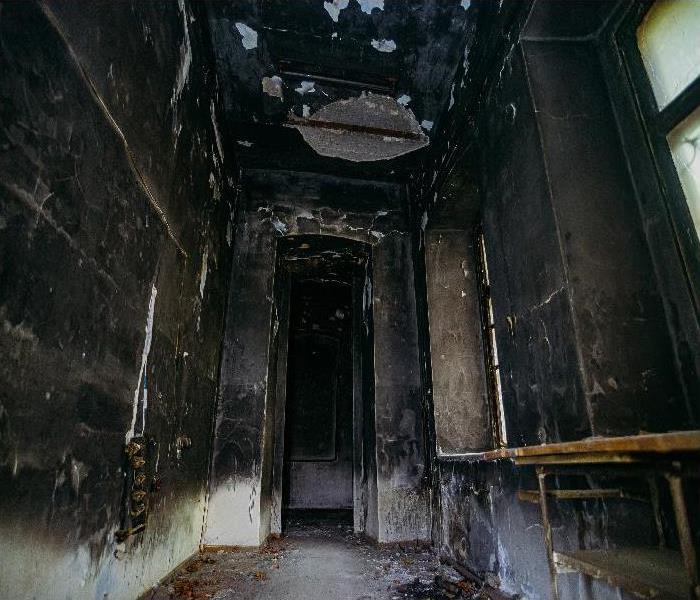Why Is Fire Damage in Your Burlington Kitchen So Tough to Restore?
8/3/2020 (Permalink)
The Highly-Qualified Team at SERVPRO Understands the Demands of Protein-Based Fire Damage Restoration for Our Burlington Customers
Every “fuel” a household fire burns through is associated with a particular type of residue. The food and oils that suffered super-heating during a blaze in your Burlington kitchen create a fire damage coating like no other. The “soot” is not the incompletely combusted remains of building materials and contents like dry and wet soot. Instead, it is the dehydrated leavings of the meats, vegetables, fats, and oils. Its protein base means the residue is transparent but tightly adhered like varnish. The residue also has a strong stench, not surprisingly, because the remnants are heated past the smoke point, undergoing a chemical change that renders them rancid.
What Is the Answer to Removing Protein-Based Soot on the Way to Fire Damage Restoration?
SERVPRO crew members complete a rigorous training course from the Institute of Inspection Cleaning and Restoration Certification (IICRC) to prepare for fire damage restoration in your Burlington home. We learn about the principles and elements of cleaning, using them as a guide:
Principles of Fire Damage Cleaning
• Locate residues
• Identify characteristics of residues
• Evaluate the type and durability of affected surfaces
• Capture and remove residues
• Lawfully dispose of residues and the cleaning solutions used
Element of Cleaning
• Temperature -- manipulate to impact the speed of chemical action and prevent shrinkage and color bleed
• Agitation -- deliberate use of friction impels a break in the bond between the affected surfaces and the residues
• Chemical Action -- soaps, detergents, and solvents dissolve or emulsify the residues to remove them
• Time -- also termed “dwell time,” it is the period a cleaning solution is permitted to work on loosening the debris
What Is the Balance We Create to Restore Residue-Free Surfaces?
Protein-based residues loosen most efficiently through the use of solvents, extended dwell times, and abrasive products or tools. Odor removal is particularly tricky and might require the addition of enzymatic products or thermal fogging or hydroxyl generation interventions.
Contact SERVPRO of Bristol day or night for professional assistance with fire damage restoration. Manage all aspects of the fire damage disaster, starting with one call to (860) 582-3330.

 24/7 Emergency Service
24/7 Emergency Service
